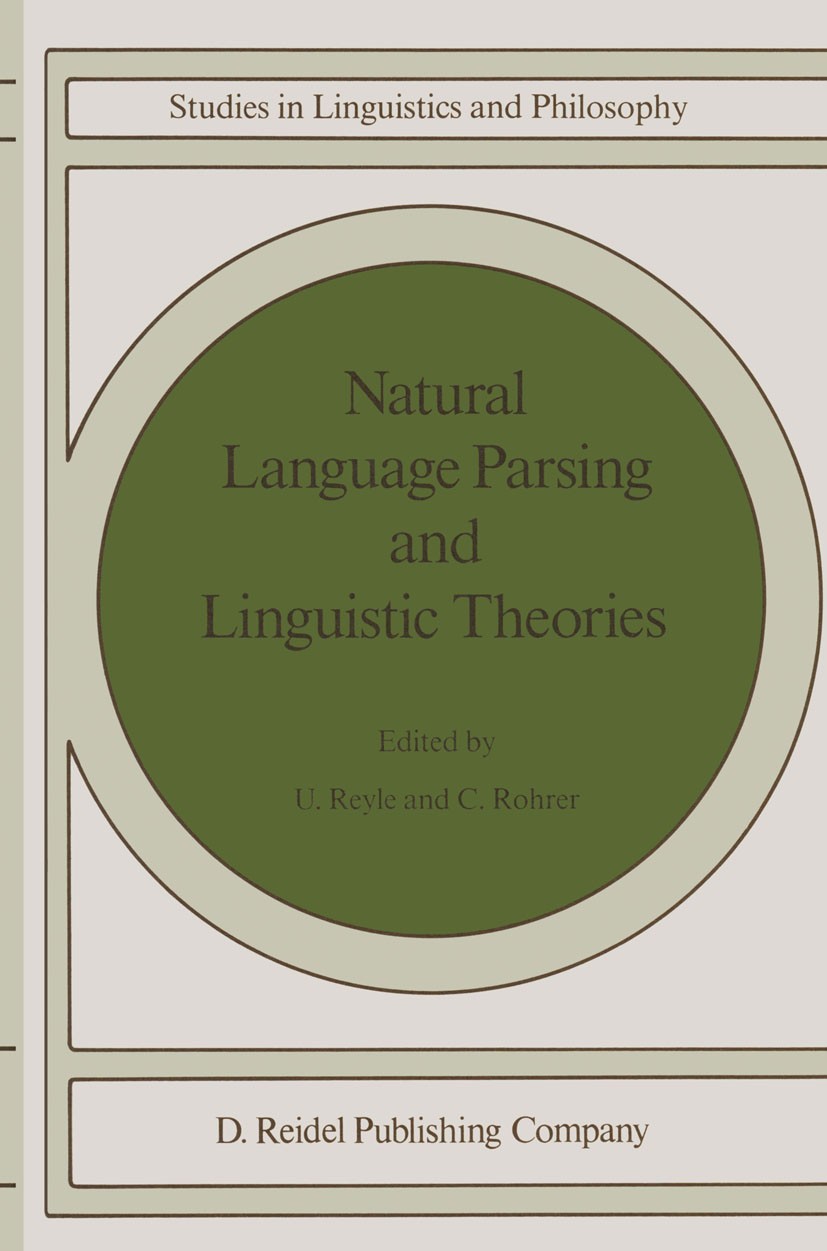| 書目名稱 | Natural Language Parsing and Linguistic Theories | | 編輯 | U. Reyle,C. Rohrer | | 視頻video | http://file.papertrans.cn/662/661794/661794.mp4 | | 叢書名稱 | Studies in Linguistics and Philosophy | | 圖書封面 |  | | 描述 | presupposition fails, we now give a short introduction into Unification Grammar. Since all implementations discussed in this volume use PROLOG (with the exception of BlockjHaugeneder), we felt that it would also be useful to explain the difference between unification in PROLOG and in UG. After the introduction to UG we briefly summarize the main arguments for using linguistic theories in natural language processing. We conclude with a short summary of the contributions to this volume. UNIFICATION GRAMMAR 3 Feature Structures or Complex Categories. Unification Grammar was developed by Martin Kay (Kay 1979). Martin Kay wanted to give a precise defmition (and implementation) of the notion of ‘feature‘. Linguists use features at nearly all levels of linguistic description. In phonetics, for instance, the phoneme b is usually described with the features ‘bilabial‘, ‘voiced‘ and ‘nasal‘. In the case of b the first two features get the value +, the third (nasal) gets the value -. Feature- value pairs in phonology are normally represented as a matrix. bilabial: + voiced: + I nasal: - [Feature matrix for b.] In syntax features are used, for example, to distinguish different noun classes. Th | | 出版日期 | Book 1988 | | 關(guān)鍵詞 | Parsing; Syntax; functional grammar; generalized phrase structure grammar; grammar; infinitive; language; m | | 版次 | 1 | | doi | https://doi.org/10.1007/978-94-009-1337-0 | | isbn_softcover | 978-1-55608-056-2 | | isbn_ebook | 978-94-009-1337-0Series ISSN 0924-4662 Series E-ISSN 2215-034X | | issn_series | 0924-4662 | | copyright | D. Reidel Publishing Company, Dordrecht, Holland 1988 |
The information of publication is updating

|
|
 |Archiver|手機版|小黑屋|
派博傳思國際
( 京公網(wǎng)安備110108008328)
GMT+8, 2025-10-22 06:20
|Archiver|手機版|小黑屋|
派博傳思國際
( 京公網(wǎng)安備110108008328)
GMT+8, 2025-10-22 06:20


